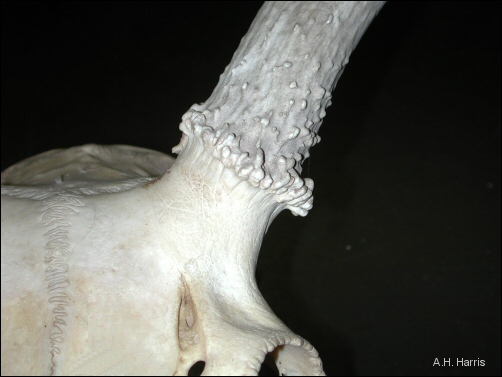

We learned in grade school that insects have an exoskeleton covering the outside parts of the body, but that vertebrates like ourselves have an internal skeleton, covered over by flesh and skin. As in so many things in the biological world, though, generalizations often don't cover the whole story. There's one big group of mammals, the deer family, where part of the skeleton is regularly exposed to the surface in males and, in a few cases, females.
Antlers are extensions of the frontal bone, the bone that makes up our
foreheads. The antler starts out like other bones, covered with soft tissue: the
velvet. After full growth of the antler is complete, these tissues die, leaving only
bone. In most deer, the antlers are for use in competition during the breeding season.
After that is complete, a special layer at the base of the antler is reabsorbed, and
the antler falls or is knocked off. The following year, the whole process starts over
again. Puts a whole new light on the use of "bonehead" as an insult,
doesn't it?

Contributor: Arthur H. Harris, Laboratory for Environmental Biology, Centennial Museum, University of Texas at El Paso.
Desert Diary is a joint production of the Centennial Museum and KTEP National Public Radio at the University of Texas at El Paso.

Deer skull, including left frontal and base of antler. As can be seen, the antler is merely a continuation of the frontal bone. The antler ultimately will be shed just below the expanded "collar" of the antler. Photograph by A.H. Harris.